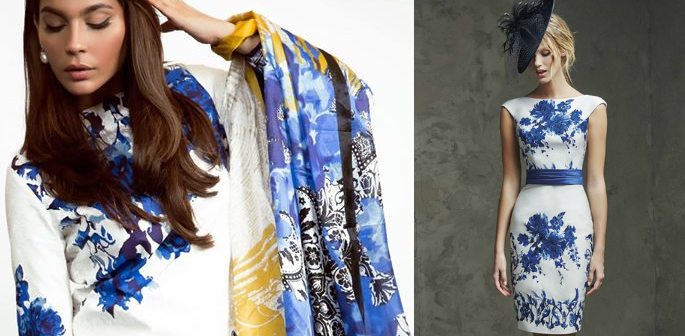"It must be proven that the copy is ‘substantially identical’ to the original so as to be mistaken for it."
Imitation is the sincerest form of flattery so long as it doesn’t turn into blatant, unapologetic infringement.
The Pakistani fashion industry has come a long way from the days when fashion weeks were not even a concept to consider.
Not only are Pakistani designers consistently showcasing collections back home, many have even made their way into Paris, London and beyond.
Quite a few headline as kings and queens of varying fashion domains on a daily basis. And a majority of them are now retailing abroad. But all goes to waste when these same designers make it to Instagram feeds for plagiarising.
Caught in the act, once again, is designer duo Sana Safinaz. Theirs is the most coveted lawn of the year and often the cause of mass hysteria.
Women have been known to turn into vicious, sinister creatures just to get hold of one of their lawn prints. And hoards of them line up outside their stores early morning on the day of the launch. Their lawn outfits just sell out like hot cakes.
But how will it make customers feel if they find out that the one print they had been fretting over is a mere copy? A rip-off? The exuberant amounts of money that they spend on ‘designer lawn’ isn’t really giving them design value because it’s not original?
Sadly, all lawn fanatics face this dilemma year after year and this year is no different.
https://www.instagram.com/p/BRKUuaDBz9-/?taken-by=aamiriat&hl=en
It’s ironic how these famous Pakistani designers, including Sana Safinaz, have gone out of their way to ensure that their designs are not copied and sold in the open market by street sellers. Legal notices have been issued along with warning messages in local newspapers when they, too, are involved in plagiarism.
After coming under fire for copying patterns from high street brand ZARA as well as Emilio Pucci, Sana Safinaz are, once again, in the limelight for ripping off patterns from Spanish wedding wear label Pronovias.
Print 4B that has a Russian rose pattern printed on a creme base with hints of embroidery and a silk dupatta has an uncanny resemblance to one of Pronovias’ designs ‘Laira’ from their cerimonia collection 2016.
This shameless replication was first spotted by Secret Buyer Pakistan and later shared by blogger Syed Aamir Bukhari. They and a handful of others have made it impossible for fashion plagiarism to go undetected. And their number of posts, in this case, are evidence of the rampant plagiarism that Pakistani fashion industry is plagued with.
However, it would be unfair to put the entire blame on Sana Safinaz. There are many other Pakistani designers – most of whom are dubbed as the movers and shakers of the industry.
From Zara Shahjahan to Khadija Shah of Elan; from Aamna Aqeel to Natasha Kamal, it’s a never-ending vicious cycle where plagiarists become victims and vice versa.
https://www.instagram.com/p/BEMB_wwLi0-/?taken-by=aamiriat&hl=en
It all boils down to a simple fact: there is no accountability for this in Pakistan. There are no proper copyright infringement laws and no thorough implementation of any either. In fact, even international law blurs the line between what constitutes plagiarism and inspiration.
The Schumer Law on copyright in fashion (introduced in 2010 by Senator Charles E Schumer with support from the CFDA) states:
“A designer who claims that his work has been copied must show that his design provides ‘a unique, distinguishable, non-trivial and non-utilitarian variation over prior designs.’ And it must be proven by the designer that the copy is ‘substantially identical’ to the original so as to be mistaken for it.
“The bill would cover all fashion designs, including products like handbags, belts and sunglasses, for a three-year period from the time the item is seen in public—on a runway, say. Factors than can’t be used in determining the uniqueness of a design are colour, patterns and a graphic element.”
As Umair Tabani, chief financial officer of the label Sania Maskatiya, said at a panel discussion in 2015: “Copyright has its own issues in any case — if a design is changed by 20 percent it is no longer called a copy.”
With that even a slight change to an original design allows the designer to get away with copying in the name of inspiration.
But the essence of design lies in creativity and originality and even though plagiarism in fashion is murky, tricky territory, our Pakistani designers owe it to themselves, to their education and to their customers to be truthful about their creations.
It’s understandable that the purpose of fast fashion and the high street is to package and sell high-end trends at affordable prices. But the minute you add ‘designer’ to lawn and charge a premium for it, you can’t pitch unoriginal, Western rip offs under Eastern wear label.





























































